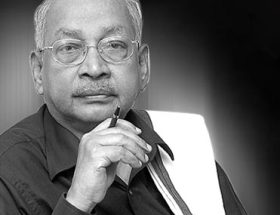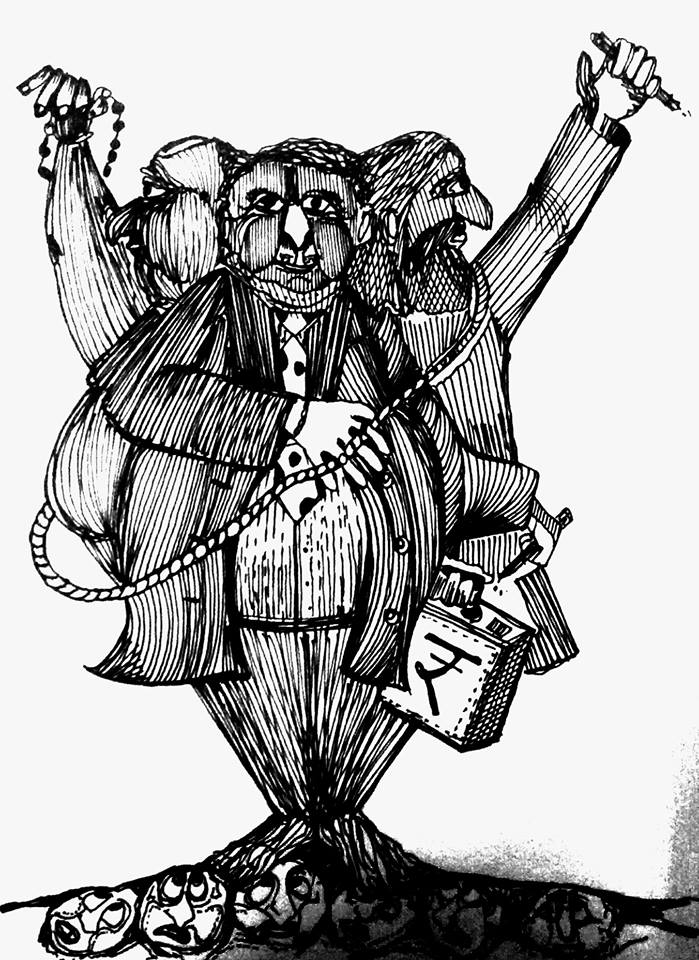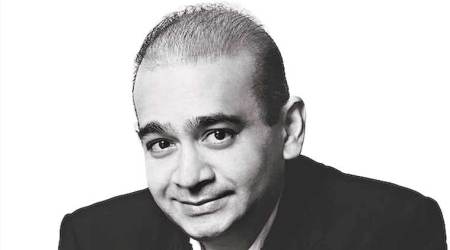Shahnawaz Ahmad Ansari
 Pogroms, communal strife, and massacre have been cultural blots in the garb of reflex action ever since independence because these are ingrained in the bedrock of divided India. But lately, the emergence of ‘spontaneous-mob-lynching’ with a tinge of pride-pouring Hindutva superseded by the enlightened spirit to safeguard its sanctity is, of late, a new craft in the attire of democratic subversion, scripting unveiled snarls. The ‘new-lynching-normal’ of the trivial kind in ceaseless series conceived in the last five years might be a subtle attempt to let the people feel the sought-after-transition of India from a ‘Secular State’ to a ‘Theocratic State’.
Pogroms, communal strife, and massacre have been cultural blots in the garb of reflex action ever since independence because these are ingrained in the bedrock of divided India. But lately, the emergence of ‘spontaneous-mob-lynching’ with a tinge of pride-pouring Hindutva superseded by the enlightened spirit to safeguard its sanctity is, of late, a new craft in the attire of democratic subversion, scripting unveiled snarls. The ‘new-lynching-normal’ of the trivial kind in ceaseless series conceived in the last five years might be a subtle attempt to let the people feel the sought-after-transition of India from a ‘Secular State’ to a ‘Theocratic State’.
What we can call this new dispensation? It’s armed with an ideology and a socio-political programme that are diverse with what we have been accustomed to for most of India’s independent career. It is important to realise that a silent proclamation that India is a ‘Hindu nation’ and ‘Hindutva’ is its identity — strikes a massive blow at the secular concept of Indian citizenship and at the Constitution itself.
Needless to say that the spraying of anti-Muslim venom into society, which has resulted in the formation of lynch-culture, the over-enthusiastic fanatic crusaders are pretty confident to desert and decry secularism — tattooing it — ‘an outdated, formulaic and hack concept’ — presuming to replace it with trending Hindutva.
Observably, functional Hindutva, steering the legitimacy of majoritarianism as an imperative of electoral democracy and calling for an authoritarian ‘National Unity’ and ‘Patriotism’ on this divisive and reactionary basis is what ‘Pseudo-Nationalism’ seeks to achieve for the communalists. Moreover, this experiment is all set to carve out a barren plain for ‘Real-Nationalism’ undermining the edifice of age-old communal harmony in tandem.
Trending Melodrama of Muslim’s Mob-Lynching
As per the data revealed from an authentic source, 86% of those dead in cow-coated violence since 2010 are Muslim. Of them, 97% of the attacks took place after 2014. Almost 122 incidents of cow-coated violence took place in India between 2014 and 2019.
Although lynching is not a new phenomenon, yet the meticulously designed and trending new-craft of lynching took an aggravated turn since 2014. And in 2015 when Mohammed Akhlaq was lynched in UP’s Dadri for allegedly storing and consuming beef in his house, it gathered scrupulous storm, setting a new plot for lynching as the Akhlaq’s assailants were acquitted followed by felicitation rather than bringing them to book.
Since then, there is no looking back as the brutality turned out experimental in every nook and corner of the country, strengthening the belief of the fanatics that whatever they did were righteous, spicing up the religious verve as the majoritarian society as well as the state machinery — whether it’s judiciary or executive — protected them like holy war crusaders.
That orchestrated mob-lynching paved the royal road to the ‘right-wing-lynch-squad’, boosting their morale to cling to communal sprawling and looking for a slide to making ‘lynching’ — an ethos of sorts and a routinely telecast ‘serial’ alike. In fact, the aftermath of mob-lynching persuaded the assailants that lynching was no longer a crime as it got a thematic approval from the ‘Social-Naxals’ as well as the ‘Governmental-Smugglers’, thereby invigorating them to conspire for these incidents consistently.
Now, look at the chronology of lynching since 2014.

Tabrez Ansari’s Recent Lynching and Police Charge-Sheet
Surprisingly, the Jharkhand police have diluted the charges of the assailants by writing down that the 11 men arrested for Tabrez lynching, which was a culpable homicide that does not amount to murder. Doesn’t it sound strange that those who labelled Ansari a thief tied him to a pole and assaulted him for hours at night are not going to be prosecuted for his murder? Whether the police are going to include accounts, which claim that he was forced to chant ‘Jai Shri Ram’ or not, is unrevealed.
Doesn’t it establish a clear sectarian motive on the part of the crowd to turn into a lynch mob and attack him? Then, how the police have chosen to prosecute them for culpable homicide? What does it show? Is the causal link between the assault on the person and his death has been established? There is a volley of questions revolving around this brutal murder, which has been transmogrified to homicide.
Notwithstanding, the line between culpable homicide and murder is thin, yet it is the jurisdiction of courts to establish, but, here the police have given its report, which seems like a judicial verdict in the format of charge-sheet. Murder is punishable under Section-302 with death or life imprisonment, while forms of culpable homicide attract either a life term or 10 years in prison under Section-304 of the IPC.
Let aside the Police findings. Isn’t it obvious that merely attributing death to a heart attack is meaningless without referring to the trauma caused by physical assault? The narrative in recent lynching incidents that it was the victim who was at fault may come in for needless reiteration unless the prosecution resolutely makes a case of murder. The suspicion that the charge is being diluted underscores the need to legislate a special anti-lynching law like the UAPA.

Mob-lynched Tabrez Ansari won’t get justice as the murder charge against 11 accused dropped from the police charge-sheet. The police find it culpable homicide. It’s indeed a deliberate executive prejudice against the Muslim minority!
Such a law could cover acts of group violence, whether spontaneous or planned so that those who join lynch mobs do not gain from any ambiguity about their intentions. But this seems a utopian dream at least in the current scenario where the prism of review sets on the launch pad of the individual’s whim. By and large, nothing can happen towards the restoration of communal harmony unless the camouflaged social-political hypocrisy is exposed.
The police charge-sheet tried to justify the mob crime by charging Ansari with the “intention” of stealing. They ignored the evidence on a video of this being a religious hate crime. Ansari’s uncle, who went to the lynching site in the morning, records in his statement that he heard a member of the mob shout, “Beat him so much that he dies”. And it happened. Eventually, he was beaten to death with the same intensity — an apparent fact that even the flora & fauna, sky and the blowing wind of that region witness.
Surprisingly, the paradox of the police charge-sheet and the deliberate attempt of manipulation indicate the prevalence of ‘Fascism-Fusion’, reminding me of one of the assertions of Adolf Hitler: “The receptivity of the masses is very limited, their intelligence is small, but their power of forgetting is enormous. In consequence of these facts, all effective propaganda must be limited to a very few points and must harp on these in slogans until the last member of the public understands what you want him to understand by your slogan.” Here ‘Jai Sri Ram’ – a credulous buzz word – driving the ‘Subliminal-Slogan’.
In the troubled times, can we hope the upkeep of our age-old unity in diversity when the Vedantic tradition of once tolerant Hindutva is undermining the secular stature of the country and bulldozing all other traditions under the juggernaut of ‘Jai Sri Ram’? Is there anything left that might uphold the liberal values of Hinduism and maintains the communal harmony of the country?
I, being an Indian am a bit confused! Is the divine slogan — ‘Jai Sri Ram’ bears the brand of ‘New India’ — unfolding the trio-manifesto of the government in power — Sabka Sath, Sabka Vikash, Sabka Vishwash or ‘Bharat Mata Ki Jai’ or ‘Vande Matram’?
What should a common man perceive in secular Indian where the Muslim minority is brutally murdered routinely for not chanting the magical ‘Jai Sri Ram’? Such questions are innumerable to ask with the state! However, answers available with the state are either negligible or ineligible! Let’s hope for the BEST, but simultaneously be prepared for the WORST!
~~~
Shahnawaz Ahmad Ansari is writing professional and a social activist who writes on a wide range of topics. He has extensive experience in writing & editing with media and non-media organisations. He is a commentator on burning issues and also writes columns, editorials & opinion pieces to different journals. He can be reached out at saasiwan@gmail.com.










